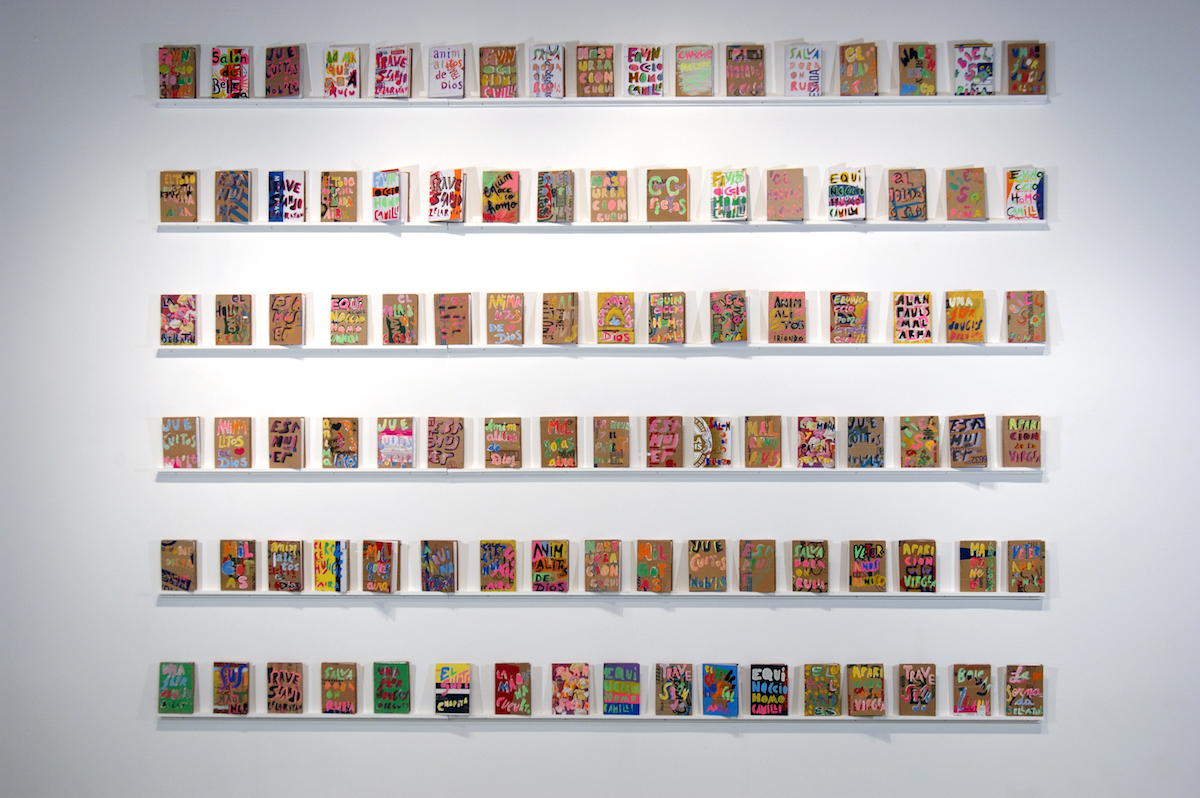Structure & Stories
Group Show
“Structure” refers to post-structuralism, physical structures (like architecture and Constructivism), and structures of thought (including categories and hierarchies). “Stories” bring “structure” down to earth.
These artists carnivalize art. Mikhail Bakhtin’s theory of carnivalization is “the transposition of carnival into the language of [art].” Laughter, sensual pleasures, suspension of social hierarchies, and political upheaval intertwined during medieval carnival. Slaves were crowned carnival king and staged/lived a joking/serious revolution that persisted in everyone’s attitude all year long. Carnival participants internalized the “joyful relativity” of power.
These artists’ irreverent humor—from parody to quasi-slapstick to dry—serves critical ends: serious drama, art historical revisionism, politics of social inclusion, etc. They contaminate canonical forms with performative elements together with an aesthetics of understatement. They insert their own discourse into these dominant structures and in that way modestly yet vengefully make them their own. In so doing, their discourses become part of the language of authority, part of history.
Ben-Ner deskills the literary and film genre of epic adventures, like Robinson Crusoe, by filming these at home with his family and making them absurdly low tech. Performing these survival tales, he uses his body faux-masochistically to parody 1970s video art by Vito Acconci or Dennis Oppenheim. Eloísa Cartonera reworks the structure of publishing by placing cartoneros (those who provide the recycled cardboard for covers and paint them) and authors (those who donate texts) on the same conceptual level and by selling their books in the street for extremely low prices. Sánchez-Calderón works in a consistently open-minded process of interdisciplinary and collaborative experimentation. He carnivalizes modernist architecture by infusing ideas inherited from “Le Corbusier”. Le Corbusier and his contemporaries with popular knowledge and by putting physical structures indebted to them to the test in marginalized public places. Slaughter remakes photography, the only art form of solely European origin, by performatively “taking a guy from Persian miniature world and dropping him into camera world” on video. To make another work, a long horizontal light box, he rigs a still camera to shoot a time-based scene in one elongated exposure that spans an entire roll of slide film, thus destabilizing the concept of perspectival space.
The exhibition is curated by Amy Rosenblum Martín, a New York-based curator of modern and contemporary art. During nearly twelve years of experience in the field, she has organized over forty exhibitions, mostly as curator at the Miami Art Museum (1996-2000) and The Bronx Museum of the Arts (2002-05). She also worked for Colección Patricia Phelps de Cisneros’s www.coleccioncisneros.com (2001). She studied art history at Oberlin College, Universidad Nacional de Buenos Aires, and Columbia University, where she wrote the masters thesis “Inverted Envy: Lucio Fontana and the Argentinean Avant-Garde of the 1940s” (2002). Her forthcoming projects include a Quisqueya Henríquez survey exhibition this fall at The Bronx Museum of the Arts.
This idea is indebted to Felix Gonzalez Torres in Dietmar Elger, Felix Gonzalez-Torres: Catalogue Raisonné (Ostfildern-Ruit, Germany: Cantz Verlag, 1997) 78-79.
Guy Ben-Ner
Eloísa Cartonera
George Sánchez-Calderón
Kwabena Slaughter
Curated by Amy Rosenblum Martín


